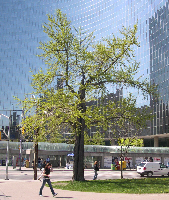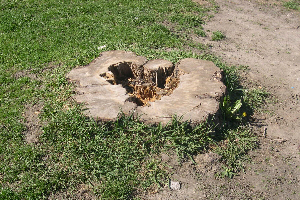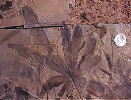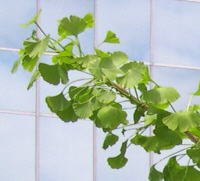Up until 2006 there was a Ginkgo on the NW corner of College Street and Queen’s Park Crescent, which was said to be the first Ginkgo to be planted in Toronto. My grandmother told me this in the late 1930s. She pointed out that it was not in the best shape (as can be seen today) because it originally was planted much closer to the centre of the intersection. In the mid 1930s both street were widened to allow for the increased traffic and the tree had to be relocated.

Ginkgo as seen in 2006.

Only a stump was seen in May 2007.
Today there is only one species of Ginkgo, and that was only found, about a century ago, in a few remote places in China. In the age of the dinosaurs (the Jurassic and Cretaceous periods) Ginkgoes were widespread. Fossils of several species have been found in many parts of the world. It is likely that they grew in this part of North America. It was thought that Ginkgo was extinct until some were found in a Chinese temple garden. Since the it has become a favoured tree for city planting. We often call it a living fossil.



Leafs: today’s Ginkgo biloba and fossil Ginkgo

End of Ginkgo branch in leaf
It is deciduous and dioecious (the male and female flowers are found on separate plants). As the fruit of the Ginkgo has an unpleasant odour, mostly male trees are planted. It is also called the Maidenhair tree as the fan shaped leaves reminded some people of the Maidenhair Fern. Throughout South- east Asia the seed kernels have commercial value. The leaves are used for a tea that is said to help delay the onset of senility.
